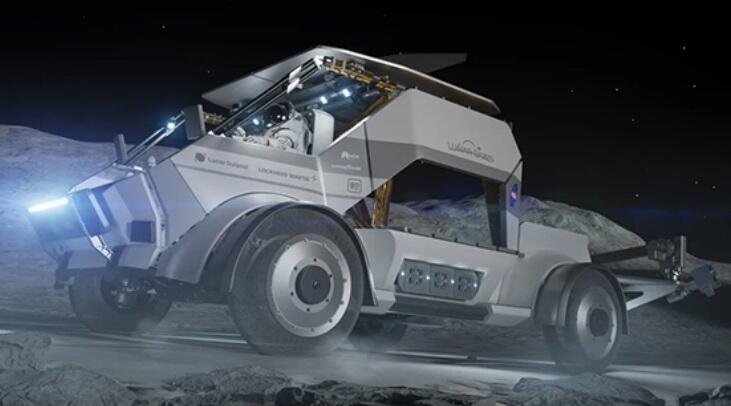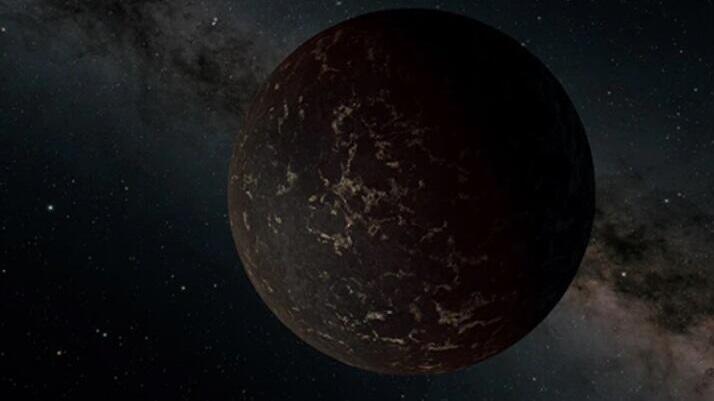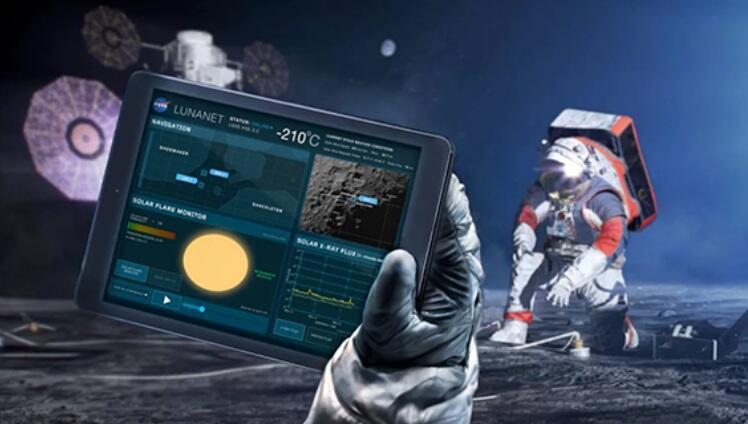NASA, the United States space agency, has chosen three companies to embark on the initial development of vehicles for lunar travel. The agency is expected to choose one of the developed devices, to serve the astronauts of the Artemis program starting from Artemis 5, currently planned for 2030. The selected companies are Intuitive Machines, recognized for landing the first private spacecraft on the moon in February this year, Lunar Outpost, and Venturi Astrolab.
Each company does not develop its vehicle independently but works in collaboration with leading companies in the automotive and space sectors. Intuitive Machines is partnering with space companies Northrop Grumman and Boeing, alongside automotive companies AVL and Michelin. The partnership list of Lunar Outpost includes Lockheed Martin, General Motors, and Goodyear, while Venturi Astrolab collaborates with space companies Odyssey and Axiom.
3 View gallery


The lunar rovers are designed both for use by astronauts as well as for unmanned activities
(Illustration: Lockheed Martin)
The three partnerships were chosen from among nine proposals submitted to the space agency. Although NASA has not disclosed the financial details of each contract, Intuitive Machines has received $30 million from the space agency for its initial development phase. Upon completion of the initial development stage, NASA is expected to select one company for a demonstration mission showcasing the vehicle's capabilities on the moon.
If successful, NASA plans to procure lunar transportation services from the chosen company. Overall, the agency is expected to invest 4.6 billion dollars in lunar rover contracts over the next 15 years. According to the new operational model, the agency will not purchase the vehicles themselves from the company, but rather the service, similar to tenders for lunar landing vehicles or new spacesuits. This approach enables the winning company to offer its vehicle to other entities, such as other space agencies or private companies operating on the moon.
The vehicles to be developed according to the tender are intended for the activity of two astronauts on the moon, and they are not intended to be airtight and filled with air – meaning that the astronauts operating these vehicles will need to wear full space suits, reminiscent of the vehicles used during the last three Apollo missions on the moon, more than five decades ago. However, unlike their predecessors, the new vehicles are designed to operate autonomously or by remote control. This will enable their use for equipment transport and also as a platform for research even in the absence of astronauts, and even between missions - at times when there are no astronauts present on the moon. The devices on the vehicles can be used for scientific research, data collection, mapping, and local resource searching.
The companies selected to develop the initial proposal are now required not only to present a vehicle prototype but also to address operational considerations and the means for the vehicle's launch to the moon within a year. The companies are to submit their proposals within a year, after which, NASA will select the vehicle for further development towards its demonstration mission.
“We will use the LTV to travel to locations we might not otherwise be able to reach on foot, increasing our ability to explore and make new scientific discoveries,” said Jacob Bleacher, NASA's chief scientist of research systems.“With the Artemis crewed missions, and during remote operations when there is not a crew on the surface, we are enabling science and discovery on the Moon year around.”
What's the Time on the Moon?
Looking ahead to future lunar endeavors, the White House has directed NASA to develop a uniform standardized system for keeping time on the Moon, effectively creating a dedicated "moon clock" or "Coordinated Lunar Time" (LTC), distinct from Earth’s Coordinated Universal Time (UTC). The White House Office of Science and Technology Policy has instructed the space agency to develop the LTC standard by the end of 2026, in collaboration with the Department of Transportation, Department of Defense, Department of Commerce, and Department of State.
Presently, lunar missions use Earth's UTC. However, due to relativistic effects and other factors, a lunar clock that is tied to Earth’s UTC would drift by about 60 microseconds per Earth day on average. This deviation may seem minor, and it would take nearly 50 years to accumulate a single second difference between the clocks. Nonetheless, this time discrepancy could become critical, as highly accurate and well-coordinated clocks, with an accuracy on the level of fractions of seconds, are needed to successfully operate satellite navigation systems, communication systems, and other critical operations.
“As NASA, private companies, and space agencies around the world launch missions to the Moon, Mars, and beyond, it’s important that we establish celestial time standards for safety and accuracy,” said Stephen Welby, Deputy Director for National Security Affairs at the Office of Science and Technology Policy. "A consistent definition of time among operators in space is critical to successful space situational awareness capabilities, navigation, and communications, all of which are foundational to enable interoperability across the U.S. government and with international partners.”
The new policy document sets four requirements for the lunar time standard that the space agency must formulate: the ability to synchronize it with Earth's UTC, the precision level required for navigation and research, the ability to function even in the event of disconnection from Earth, and the possibility to develop and adapt it for environments beyond the Moon. Additionally, the agency is required to integrate the lunar time standard program within the Moon to Mars architecture—a master plan for developing technologies and work methods for future Mars missions.
NASA's plans include returning humans to the Moon by the end of 2026 as part of the Artemis program, with subsequent endeavors aimed at establishing a sustained presence there, possibly alongside private missions or commercial research stations. Even if this timeline is delayed—as seems likely—we can expect to witness increased human as well as robotic activity on the Moon in the coming years, particularly within the next decade. Robust navigation and communication systems reliant on a uniform and precise lunar time standard will be indispensable for such activities.
Chinese Surveillance from Above
China launched a new surveillance satellite, Yaogan-42, on Tuesday. The first satellite of this model was launched from the Xichang Satellite Launch Center in southern China, aboard a Long March 2D rocket, into orbit at an altitude of approximately 500 kilometers. Manufactured by the China Aerospace Science and Technology Corporation (CASC), neither the corporation nor the Chinese media outlets have divulged details regarding the satellite’s intended purpose and capabilities. While China has previously stated that the Yaogan satellites are intended for civil use, Western analysts believe that at least some of them may serve as reconnaissance satellites, employed for such tasks as optical imaging, radar scans, and electronic intelligence gathering.
This week's launch was China's 15th orbital launch since the beginning of the year, with the country aiming to reach a hundred space launches during 2024, two-thirds of these launches represent government-led endeavors, while the rest are being conducted by private enterprises.
The Two Sides of an Exoplanet
Scientists believe that many of the exoplanets discovered in distant solar systems are in a state of "tidal locking" with their sun—that is, they complete one rotation on their axis in the same duration as their orbit around the star. Consequently, one side of the planet perpetually faces the star, while the opposite side remains in perpetual darkness.
While this hypothesis is widely accepted by astrophysicists, direct confirmation through measurements presents a significant challenge. To date, we have discovered about 5,000 exoplanets in other solar systems, but the vast majority of these were detected only through indirect measurements, for example, by observing the periodic dimming of their suns as they pass in front of them, or by the tiny oscillations of the sun itself due to the gravitational pull of its planets. Measuring the self-rotation of such distant exoplanets is almost impossible with the technological means available to us.
A team of scientists from China, the United States, Canada, and Germany decided to use existing measurements to demonstrate that a particular exoplanet is found in a tidal lock. They focused on the exoplanet known as Kua'kua. This is a planet slightly larger than Earth, orbiting the red dwarf LHS 3844, located in the constellation "Indus," about 49 light-years from us. The planet was discovered in 2018 through measurements performed by the TESS (Transiting Exoplanet Survey Satellite) space telescope. It is found very close to its sun, completing one orbit around it within just 11 hours.
3 View gallery


In this case, the far side is also the dark side. An artist's representation of the unlit side of exoplanet LHS 3844b, Kua'kua
( Illustration: NASA/JPL-Caltech/R. Hurt (IPAC))
In 2019, researchers used the Spitzer Space Telescope to measure the light intensity reflected from the surface of this planet. In the new study, researchers used this data to calculate the surface temperature of this exoplanet. They determined that the surface temperature on the lit side is about 700 degrees Celsius, a temperature relatively low compared to the anticipated, presumably due to tidal locking and the very slow rotation of the planet around its axis. According to their estimates, without tidal locking, the temperatures could have been up to ten times higher.
“This is the most compelling evidence one could gather with currently existing information or instrumentation,” said Emily Rauscher, from the University of Michigan in Ann Arbor, who was not involved in the research. However, other researchers note that based on the data we have, it's not possible to rule out the presence of a thin atmosphere on the exoplanet, potentially complicating assertions of strong evidence for tidal locking. The answer may be provided by the James Webb Space Telescope, which, the researchers say, can measure the self-rotation of exoplanets, albeit exoplanets that are found a slightly longer distance from the star they orbit.


